Today we are discussing how to increase your profits by thinking like an Amazon customer. We find out why Amazon is considered one of the most customer-friendly companies and how they achieve this. Looking at their return policies, user-friendly website, and customer reviews, we understand why they are a successful company.
When reflecting on our own journey of selling on Amazon, we teach the importance of minimizing making assumptions, scanning products and source data (even if you don’t think you should,) actively opening your eyes to products you may normally overlook, and keeping a look out for clearance and sales. We know you could never eliminate having items returned, but we start to understand how to minimize this by changing our perspective from thinking purely about profits. Join us to learn how to increase your profits, decrease your returns, and have happy customers!
Listen on the podcast player below.
Like what you hear? Tell a friend… and be sure to leave us a rating and a review. Here’s how.
Key points from Episode 142:
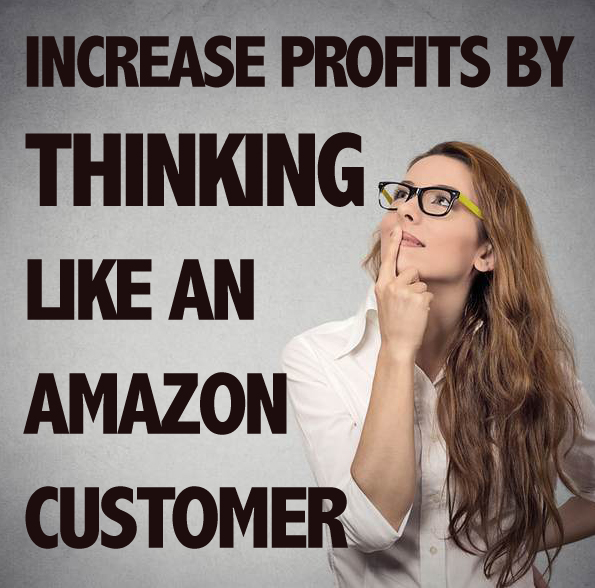 Reflecting on Amazon’s goals and how that can help us as sellers.
Reflecting on Amazon’s goals and how that can help us as sellers.- How thinking like an Amazon customer can help you get more sales and profits.
- The importance of minimizing making assumptions and always looking at clearances and sales.
- Why to open your eyes to products you may normally overlook.
- How to find higher ROI items and why to take more time to think about what products to sell.
- How to use keywords to help make more sales and profits.
- Reflecting on selling multipack items.
- How thinking like an Amazon customer can help you get fewer returns.
- How to stop fixating on your profits to the detriment of your Amazon business.
- The temptation of selling your products as completely new when they are not.
- How to think like an Amazon customer while making your listings.
Links and resources mentioned in this episode:
Right-click here and save as to download this episode to your computer.
![]()
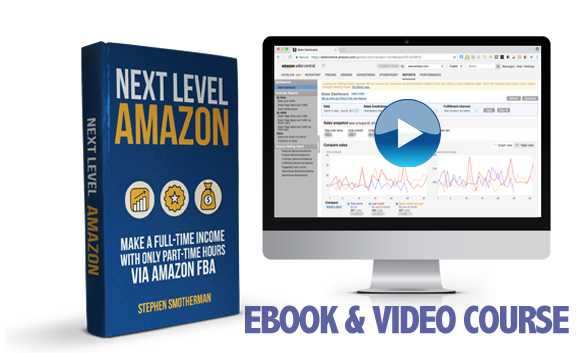 Next Level Amazon
Next Level Amazon
Make a Full-Time Income With Only Part-Time Hours via Amazon FBA
*Next Level Amazon is currently closed to the public, but you can click on any link in this section and sign up for the wait list to be notified when the doors of enrollment open up again.
If you’re looking for a step-by-step process on how to finally turn part-time hours into a full-time income with Amazon, then check out our course, Next Level Amazon: Make a Full-Time Income With Only Part-Time Hours via Amazon FBA.
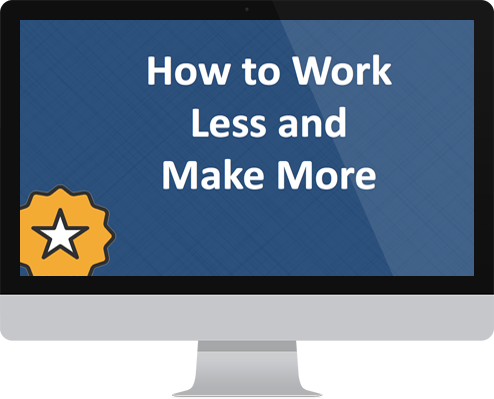 You see, successfully running an Amazon FBA business doesn’t just happen on accident. In fact, there are six proven steps to finally making a full-time income with only part-time hours via Amazon FBA. If you’re tired of not seeing the growth you expect in your Amazon business, then I highly recommend our course, Next Level Amazon.
You see, successfully running an Amazon FBA business doesn’t just happen on accident. In fact, there are six proven steps to finally making a full-time income with only part-time hours via Amazon FBA. If you’re tired of not seeing the growth you expect in your Amazon business, then I highly recommend our course, Next Level Amazon.
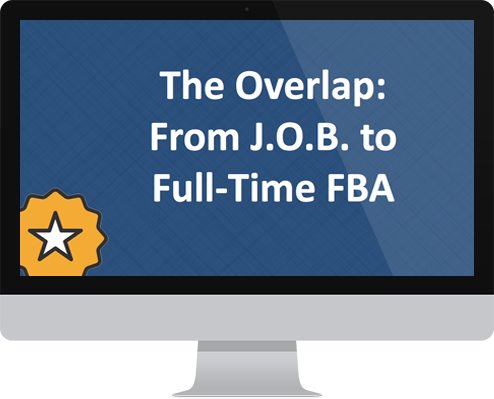 In Next Level Amazon, I outline everything you need to know in order to work less, but make more take-home pay. It’s a strategy that has helped so many people go from working 60-hour weeks just to make ends meet… to truly only working 20 or so hours each week, while still bringing home a full-time paycheck.
In Next Level Amazon, I outline everything you need to know in order to work less, but make more take-home pay. It’s a strategy that has helped so many people go from working 60-hour weeks just to make ends meet… to truly only working 20 or so hours each week, while still bringing home a full-time paycheck.
Join the wait list and be notified when Next Level Amazon opens up again to the public.
![]()
Back to the main page for The Full-Time FBA Show
More Episodes from the Full-Time FBA Show podcast:
Don’t miss an upcoming episode! Subscribe, download episodes, and review the Full-Time FBA Show:
-
-
- Subscribe on iTunes
- Follow on Spotify
- Follow on Amazon Music (or just ask Alexa to “play The Full-Time FBA Show podcast”)
- Follow on iHeartRadio
- Subscribe on Podbean
- Subscribe on Podbay
- Subscribe on Podchaser
-
![]()
Episode 142 Transcript:
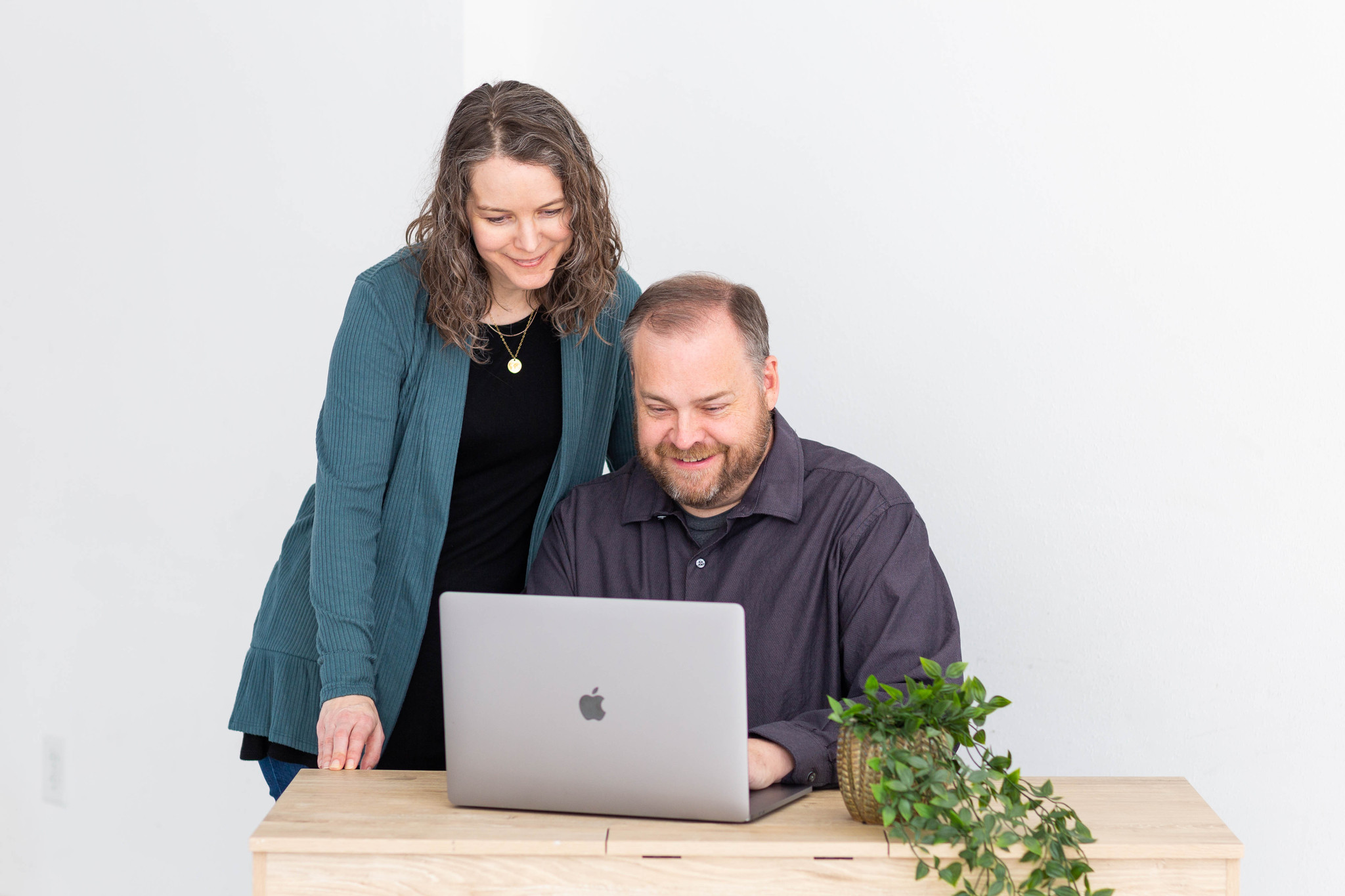
[INTRODUCTION]
[0:00:01.8] ANNOUNCER: Welcome to The Full-Time FBA Show. In each episode, it’s our goal to help you turn part-time hours into a full-time income, selling almost anything on Amazon. Now, your hosts of the show, Stephen and Rebecca Smotherman.
[WELCOME]
[0:00:21.1] STEPHEN: Welcome to episode number 142 of the Full-Time FBA Show and let me just say right at the beginning. If you’re binge listening to these episodes and you heard the last teaser, saying next week, we’re going to talk about how to get more time and money, we already did that on a previous episode and I totally blanked about that.
So if you are interested in listening to that episode, you can jump to fulltimefba.com/67 or just go to episode 67 of The Full-Time FBA Show on your favorite podcast player and you can listen to that but instead, we’re going to do something different and to do something different with me is Rebecca, my wife. How are you doing, Rebecca?
[0:00:56.0] REBECCA: I’m doing great. We are doing something different. This is a different way to introduce the show for sure.
[0:01:01.4] STEPHEN: Yeah, absolutely. So today, actually, we’re going to talk about how to increase your profits by thinking like an Amazon customer and some of you might be like, “What? How’s that going to help me?” Well, we’ll tell you in today’s episode of The Full-Time FBA Show.
[DISCUSSION]
[0:01:17.9] REBECCA: So let’s get into it today, how to increase your profits by thinking like an Amazon customer and Stephen had a little introduction at the beginning of his opening segment. I feel like I should have a little caveat. I have really bad allergies today, so if I sound stuffed up and congested sounding, that’s why and I just want to acknowledge that my voice sounds weird.
[0:01:38.1] STEPHEN: Yes, we’re both just like getting by right now and doing the best we can. You know what? That’s okay sometimes, it’s alright.
[0:01:43.8] REBECCA: Yeah, summer in Texas, it can be really brutal.
[0:01:47.1] STEPHEN: Very brutal. Allergies, temperatures, it’s rough.
[0:01:50.6] REBECCA: Okay, so, now that we’ve gotten that out of the way and I also want to acknowledge, maybe my voice sounds weird all the time, it just sounds a different kind of weird today. All right, so back to our topic, Amazon has stated that their goal is to be the most customer-centric website on the planet. You might be aware of that already as an Amazon seller, I hope you are but if not, you’re really going to take that to heart after today’s episode of our podcast.
Amazon takes the phrase, “the customer is always right” to the extreme. You can see that in things such as their return policy which is really generous, maybe the most generous return policy out there.
[0:02:26.2] STEPHEN: Oh yeah.
[0:02:26.7] REBECCA: We spend most of our time as Amazon sellers, thinking like an Amazon seller because that’s who we are, we need to be working on our business, thinking strategically about our business but we can really be missing out on some benefits of trying to think like an Amazon customer, if we’re always thinking about selling, selling, selling and not thinking about what a customer is coming to Amazon to look for, what they need in their purchases.
If we are thinking more like an Amazon customer, we could increase our profits, decrease our returns, and have happy customers who come back to buy again and again and that is a win-win-win right there straight from the office. Win-win-win.
[0:03:06.7] STEPHEN: Win-win-win, I love that. So we’re going to break this episode into two aspects. The first part, we’re going to talk about how thinking like an Amazon customer can help you get more sales and profits, and then halfway through the episode, we’re going to pivot, and talk about how thinking like an Amazon customer can help you get fewer returns.
[0:03:22.6] REBECCA: Pivot, that’s a Friend’s reference.
[0:03:24.0] STEPHEN: Pivot, pivot.
[0:03:26.2] REBECCA: The Office inference, okay.
[0:03:27.5] STEPHEN: Oh my, we’re on a roll in this episode. So more sales and more profits, thinking like an Amazon customer. So first off, thinking like an Amazon customer can open your eyes to see more items to source. A lot of times, we as Amazon sellers can make a lot of assumptions based on our previous knowledge and experience and those assumptions can cost us more sales.
A lot of times, we think and we look at a particular item, maybe it’s on clearance or maybe it’s for sale and you may think, “No one’s ever going to buy that” or you make an assumption, “No one’s ever going to pay enough money to actually make those items profitable for me” and that could be costing you.
So the tip to think about amazon customers is to just scan everything, look at actually find the actual data because there might be customers out there who are willing and there’s proof with looking at a Keepa graph about how things have been priced in the past and how well the sales will last over some time that shows you that customers out there actually do want to pay more money than we expect or they actually do want this item that we think no one would else would want to buy.
We’ve used the example before, multiple times on this podcast and at The Full-Time FBA blog about a time when I was outsourcing and I found a piece of plastic with a sticker on it and I made the assumption that no one would ever buy that or no one would ever pay enough money to make this profitable but I decided to scan it anyway and guess what? It was profitable, a lot of people were buying it and I was able to buy multiples of it and it was a really cool plastic toy with a sticker on it but I say really cool because it was profitable. That’s what made it really cool.
I actually thought it was kind of a boring toy but scan everything, look at the data and find out what the actual customers on Amazon are doing, what are the actions that they are taking, are they buying this consistently, or are they buying it at higher prices? Think like an Amazon customer and you can find more items from the source by not making those assumptions.
[0:05:15.6] REBECCA: Yeah because you as a grown man did not think that that was a cool toy but apparently, little kids did or people buying toys for little kids thought that it was cool because people were buying it.
[0:05:25.2] STEPHEN: Absolutely.
[0:05:26.3] REBECCA: Okay, the second thing that thinking like an Amazon customer will help you deal with is to find higher ROI items and again, sometimes when we’re going into a store, we’re thinking too much about just getting in there, scanning some bar codes and getting out so we can go the next store.
We’re looking for a certain type of item and we could really miss out on the higher ROI items that could be right in front of us because we’re not – we’re just not taking our time to think about what a customer is looking for when they go into Amazon as a store, as supposed to going into a brick-and-mortar store to buy items.
An example that we’ve experienced in the past, say you’re scanning toothbrushes and you scan a Paw Patrol toothbrush, just a regular toothbrush but it’s branded for Paw Patrol, it would be appealing for a kid that likes Paw Patrol and is learning to brush their teeth but you find out that that toothbrush by itself is just not profitable to sell on Amazon, it’s one little item but think like an Amazon customer.
Do Amazon customers go to Amazon to just buy one little toothbrush? I personally buy my toothbrushes on Amazon and I buy them in a pack of three and they’re not Paw Patrol, just for the record.
[0:06:37.6] STEPHEN: Yeah, you outgrew that last year.
[0:06:39.1] REBECCA: Yeah, last year. So most likely, if a customer is going to Amazon to buy Paw Patrol toothbrushes or to look for them, they also are going to be looking for a multipack or a bundle of Paw Patrol toothbrushes with other Paw Patrol toiletry items or some other type of toiletry items.
So, if you just scan the barcode of that one item, you might not find that it’s profitable but if you do a keyword search, thinking like the Amazon customer, what would you search for if you were looking for a bundle or a multipack or a pack or a lot? Use those keywords and see if other options come up that would be profitable for you and would show you some other items that you can put together.
You can either make multipacks or bundles and you could end up finding higher ROI items that way and we do this all the time just by putting in a few keywords, you can find those higher ROI items that other sellers are just passing up just because you’re thinking like an Amazon customer.
[0:07:34.5] STEPHEN: Yeah and that’s applicable to almost anything on Amazon that is a small item by itself but if you put it in a multipack or a bundle or a lot or something like that. Sometimes it could become really profitable, this is especially true in the grocery category for sure.
So those are some ways that thinking like an Amazon customer can boost your sales and profits, let’s pivot and think about how, thinking like an Amazon customer can decrease your returns. Nobody like returns, returns are a pain and we want to completely eliminate returns but we can’t do that but we can decrease them.
So thinking like an Amazon customer while you are sourcing can reduce your returns and that is true in a lot of different ways because Amazon sellers, you know sometimes we’re so fixated on the profits, we don’t see how some of the items that we’re sourcing might become their next returned order. Does that make sense?
Some Amazon sellers are so fixated on their profits that they don’t see how some of their items might be their next returned order. Some sourced border-lined items that are not a 100 percent Amazon new condition because what does Amazon say with their condition notes? 100 percent new equals brand new gift quality condition.
So an example of this is a time when I was sourcing some toys, I found a Star Wars black series little figurine of a Star Wars character, and the box was kind of scratched up a little bit but the profit was amazing and I was really tempted to buy this item, sell it as new but the box was all scratched up and I’m like, “I can’t sell this as new. This is not gift quality new.”
Yes, it’s not been opened but just because it hasn’t been used, doesn’t mean it’s Amazon’s equivalent to being a new condition. So that means when you are outsourcing to sell something that’s new, you don’t need to have items that had a ding in one of the tins or crushed corners or broken plastic, or even missing shoebox lids.
It needs to be completely new and the box needs to be new as well. When it comes to new conditions, it needs to be gift quality. We think, “Well, what’s the big deal? I mean the customer is just going to throw away this box anyway or they’re going to throw away the packaging. Why should I worry about that?”
Well, because the customer experience is very important. A lot of times they might get an item and see that the box is messed up and they’re going to give it as a gift, they are going to return it. This is especially true in clearance items because clearance items can get dinged up a whole lot.
You know, don’t let the money of profits fog your mind to make a decision like this that can really hurt your Amazon business because you get more returns, you get complaints from the customers, and just sell items in new condition that are actually in new condition. This comes up a lot in our Amazon FBA Facebook group when it comes to selling shoes.
Sometimes people are like, “Well, I don’t have the original shoe box anymore” maybe I sourced an item and they sent it to me via online arbitrage but they just sent the shoes in a bag. You know, “Is that okay? Can I sell shoes on Amazon in just a bag without the box?” Well, think about the customer experience.
What is a customer going to think when they expect a shoe box? They might think, “Well, maybe this is a counterfeit shoe. It doesn’t come with the box, it’s not real.” You don’t want them to complain about that and there are a lot of customers who like to keep the shoe boxes or keep their shoes in the shoe boxes.
So always think about the customer experience about this when it comes to sourcing inventory items that might be dinged or scratched up a little bit.
[0:10:55.9] REBECCA: Along that same line, you can also help reduce your returns if you’re thinking like an Amazon customer while you are listing your inventory. You have already made your purchases, you’ve sourced your inventory, and you’re sitting down to list it and that’s another opportunity that you have to think like your Amazon customer and make a decision that can help you reduce your returns in the long run.
So when you are listing your inventory, you might find out that this item that you are listing isn’t as good of shape as you first thought it was and if that happens, you need to always make the decision to round down on the condition of that item as you’re listing it. If you have the opportunity to sell an item as used rather than new, then you need to go ahead and do that if you’re approved to do that.
This is especially good for sellers to hear because there is always that temptation. We’ve sold books a lot in the past and continue to sell them occasionally and it’s a temptation when you’re listing your books to kind of think, “Well, it’s close enough” but if somebody buys a book in like-new or very good conditions and they open it up and see that you have sent them a book that’s even better than what they imagined because you round it down.
It’s really in new condition or like-new condition instead of like-new or very good, that customer is going to be really happy. They are going to be very pleased that they thought they were getting a very good book but they got a like-new book and they’re going to have more of a – they’re going to be more likely to leave you a positive seller feedback but if one the other hand they order a new or like-new book and they open it up to find that it has shelf wear of any kind, then that book is going to be on the fast track to your return pile.
Your seller feedback might take a hit and you are going to be losing money on that and so always round down on that condition not up. That’s a decision that you make in your listing the inventory. It’s just not worth it to make an extra five dollars or even an extra $50. When you make that sale but risk a return or the impact on your seller account. That’s just not worth it and it’s really just a bad practice to do that to your customers.
So always round down when you’re listing and just don’t put that bottom line, your bottom line ahead of the customer experience.
[0:13:13.5] STEPHEN: So those are some ways that thinking like an Amazon customer can help you get more profits, more sales, and fewer returns and I know it sometimes sounds kind of counterintuitive to think like an Amazon customer but give it a shot. Start thinking in that way the next time you’re outsourcing, the next time you’re listing your inventory on Amazon, and see how it impacts your decisions and also how it impacts your Amazon business.
Give it a shot, it’s worth it and happy customers help you get more feedback and help your Amazon business really thrive. So as a reminder, I just want to remind everybody that right now if you’re listening to this episode on the day that it drops, the Next Level Amazon Course is open for just one more day. Next Level Amazon Course is only open to the public for about a week out of the entire year and that is about to close.
Tuesday night, June 28th, at 11:59 PM, the cart will close and we will start teaching and coaching all of those who signed up for the group or private coaching options. For more information about the course, fulltimefba.com/nextlevel, and of course, if you are listening to this episode after the Next Level Amazon Course closes and you are interested, be sure to go to fulltimefba.com/nextlevel, sign up for the waitlist and I will email you the moment the course opens up again to the public next year.
[CLOSING CONVERSATION]
[0:14:33.7] REBECCA: Well, that’s all we have for you for this episode of The Full-Time FBA Show. We’re so glad you joined us. As a reminder, the links for this show, links you heard in the show, and the transcript for this show can be found in the show notes at fulltimefba.com/142 because this is episode number 142.
[0:14:52.0] STEPHEN: Next week on the show, we’re going to talk about 10 mistakes even smart Amazon sellers make. Really, that’s what we’re going to talk about next week, I promise. I mean, that’s going to be our –
[0:15:01.2] REBECCA: You said that last week that you talk – well, I don’t know if you promised last week.
[0:15:04.3] STEPHEN: That’s true. I didn’t promise it but this is really what we are going to talk about next week, 10 mistakes even smart Amazon sellers make. Let’s talk about that next week on The Full-Time FBA Show. I can’t wait to see you there.
[OUTRO]
[0:15:14.8] ANNOUNCER: That is all for this episode of The Full-Time FBA Show. So head over to fulltimefba.com/podcast, where you will find the show notes and links from this episode. While you’re there, subscribe to our newsletter where you’ll get several free downloads of our popular and helpful Amazon FBA resources. Now, take action on what you have learned today so you can find success at turning part-time hours into a full-time income with Amazon FBA.
[END]
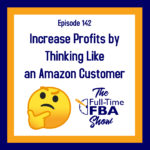

Leave a Reply